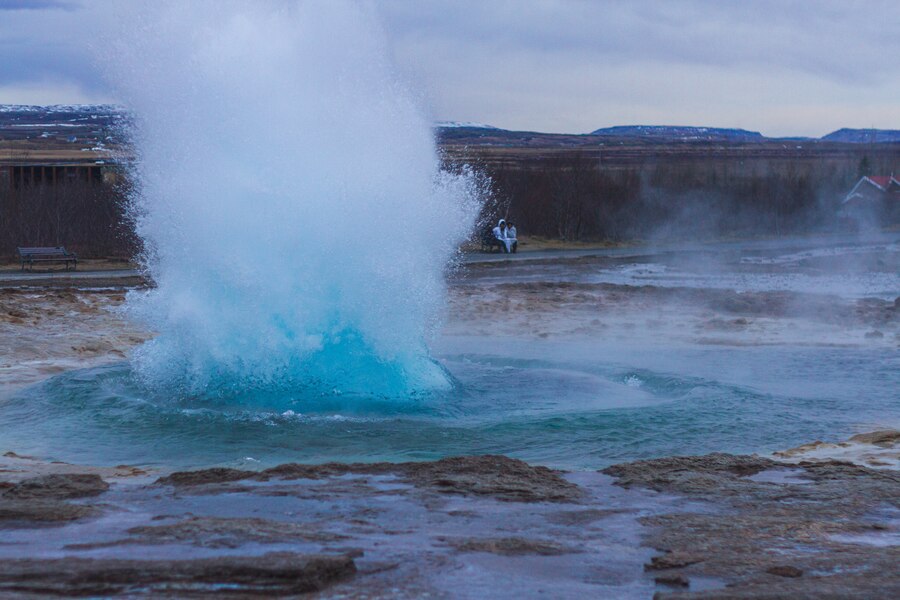
Geothermal energy explained: tapping into Earth’s heat
Geothermal energy is a powerful, renewable energy source that harnesses heat from within the Earth. It has been used for centuries, from ancient hot springs to modern power plants, and today it provides clean energy for heating, cooling, and electricity generation. By tapping into the Earth’s natural warmth, geothermal energy offers a reliable, sustainable solution for meeting energy needs without the carbon emissions associated with fossil fuels. This article explores the basics of geothermal energy, how it’s generated, and the benefits and challenges associated with this unique power source.
How geothermal energy works
The Earth’s core produces an immense amount of heat, radiating outward through layers of rock and magma to the crust. Geothermal energy taps into this heat, which is available just beneath the surface or deep underground. The temperature of the Earth’s crust increases with depth, so by drilling down, geothermal systems access the hot water and steam stored in underground reservoirs. This heat is then used to generate electricity or provide heating and cooling for buildings.
Geothermal energy can be harnessed through different methods, depending on the temperature and depth of the resources. In areas with high geothermal activity, such as Iceland, New Zealand, and parts of the United States, naturally occurring hot springs and steam vents provide easy access to heat. Elsewhere, engineers drill deep wells to reach hot water and steam reserves. These systems operate year-round, providing consistent energy regardless of weather conditions, making geothermal an attractive option for regions with limited solar or wind resources.
Types of geothermal power plants
There are three primary types of geothermal power plants: dry steam, flash steam, and binary cycle. Each type has its own way of capturing and converting heat into electricity, depending on the geothermal resources available.
- Dry steam plants are the oldest and simplest form of geothermal power. These plants use steam directly from underground wells to turn turbines, which then generate electricity. Dry steam plants are rare and are typically found in locations with naturally occurring steam sources, like California’s Geysers field.
- Flash steam plants are the most common type of geothermal power plant. In flash steam systems, hot water from underground is brought to the surface, where it quickly converts, or “flashes,” into steam due to the lower surface pressure. This steam then drives turbines, generating electricity. Any remaining water is injected back into the ground to sustain the geothermal reservoir.
- Binary cycle plants are a newer technology designed for lower-temperature geothermal resources. In these systems, geothermal water is passed through a heat exchanger that contains a secondary liquid with a lower boiling point. As the secondary liquid vaporizes, it creates steam that powers a turbine. This method is versatile and can operate at lower temperatures, making it suitable for areas where high-temperature resources are less accessible.
Direct-use applications of geothermal energy
Beyond electricity generation, geothermal energy can be directly used for heating and cooling applications. Direct-use geothermal systems tap into hot water reservoirs close to the Earth’s surface, using this heat directly without converting it to electricity. These systems can heat homes, greenhouses, fish farms, and even industrial facilities.
One common application of direct-use geothermal energy is district heating, where geothermal water is piped into buildings to provide warmth. In cities like Reykjavik, Iceland, geothermal district heating has replaced fossil fuels almost entirely, showcasing its potential for sustainable urban heating. Other uses include spa resorts that utilize natural hot springs, agriculture that relies on geothermal heat for greenhouses, and aquaculture farms that maintain optimal water temperatures for fish.
Geothermal heat pumps, or ground-source heat pumps, are another popular application. These systems use the stable temperatures just below the Earth’s surface to heat and cool buildings. During winter, heat pumps draw warmth from the ground into buildings, and in summer, they release excess heat back into the ground, providing efficient temperature regulation year-round.
Environmental benefits of geothermal energy
Geothermal energy is a low-emission, renewable energy source, making it an attractive option for reducing carbon footprints. Unlike fossil fuels, geothermal plants emit very little CO₂, and many produce no greenhouse gases during operation. For communities looking to transition to sustainable energy sources, geothermal power offers a clean, dependable solution.
Since geothermal energy is generated from Earth’s natural heat, it’s also one of the few renewable resources available continuously. Solar and wind energy depend on weather conditions, but geothermal systems provide power around the clock, making them an ideal choice for regions that require consistent baseload energy. This reliability helps stabilize energy grids and reduce dependence on fossil fuels, especially in areas prone to energy shortages.
Geothermal energy’s land footprint is smaller compared to other renewable energy projects. A geothermal plant requires less surface area than wind or solar farms of comparable capacity, which minimizes its impact on local ecosystems. In addition, geothermal sites often preserve the natural landscape, as much of the infrastructure is underground, reducing visual and environmental disruptions.
Challenges of geothermal energy
Despite its benefits, geothermal energy faces several challenges. The primary limitation is geographic; geothermal resources are more accessible in regions with tectonic activity, such as the Pacific “Ring of Fire.” Countries like the United States, Iceland, and the Philippines are well-suited to geothermal energy, while other regions may lack accessible resources.
High upfront costs are another challenge. Drilling deep wells and building geothermal plants requires a significant investment, and the exploration phase can be uncertain. Finding a viable geothermal resource involves geological surveys and test drilling, which are costly and time-consuming. For this reason, geothermal energy development is often limited to areas where high temperatures are easily accessible.
Environmental concerns also exist, though they are generally lower than with fossil fuels. In some cases, geothermal plants release trace amounts of sulfur dioxide and other gases naturally present in geothermal reservoirs. Additionally, drawing large amounts of water from underground reservoirs can lead to land subsidence if water is not replenished. To mitigate this, many plants re-inject used water back into the ground to maintain pressure levels and extend the lifespan of the resource.
Geothermal energy around the world
Geothermal energy has seen varying levels of adoption worldwide. Iceland is a global leader, with almost all of its heating and a significant portion of its electricity coming from geothermal sources. The country’s volcanic geology makes it an ideal location for geothermal plants, which provide an affordable, environmentally friendly energy source for its residents.
The United States is another major geothermal producer, with California’s Geysers field being the world’s largest geothermal complex. Other states, such as Nevada and Utah, are increasingly investing in geothermal projects, especially in regions with high demand for sustainable energy.
In Asia, the Philippines and Indonesia are leading the geothermal sector. Both countries sit on the Pacific Ring of Fire, providing them with abundant geothermal resources. Japan, too, has significant geothermal potential, although development has been limited due to environmental concerns and the presence of hot springs that are culturally and economically important.
In Africa, Kenya has emerged as a geothermal pioneer, tapping into the Great Rift Valley’s geothermal resources. The Olkaria Geothermal Plant is a landmark project that generates a significant portion of Kenya’s electricity. As other African countries recognize the benefits of geothermal energy, the continent may see increased geothermal development in the coming years.
Geothermal energy’s adaptability, low emissions, and year-round availability make it a valuable addition to the global renewable energy mix. With ongoing advancements in drilling technology and resource management, geothermal energy has the potential to expand beyond its current regions, offering a sustainable way to meet growing energy needs worldwide by tapping into the Earth’s own warmth.
